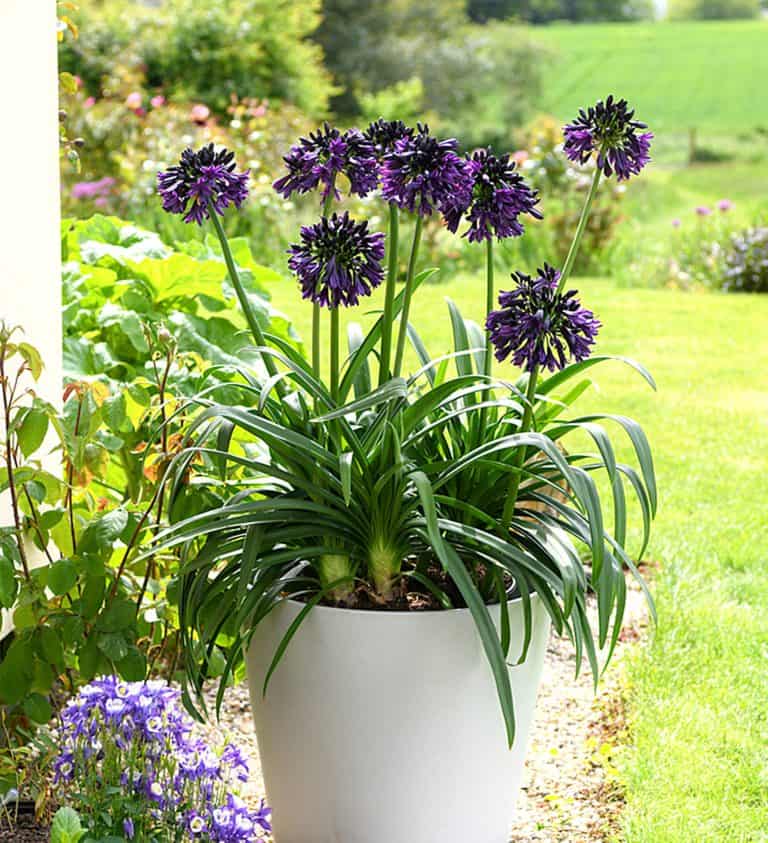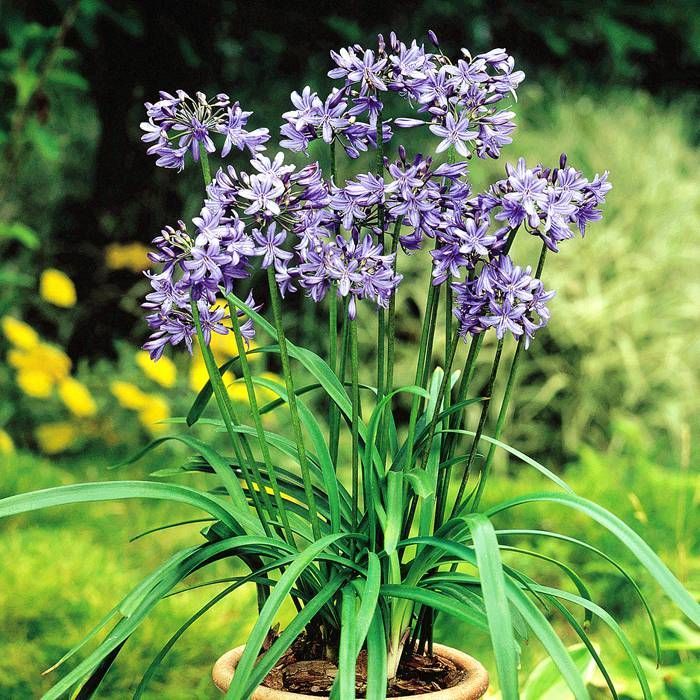Exactly how to Plant and Maintain Agapanthus in Your Yard
Exactly how to Plant and Maintain Agapanthus in Your Yard
Blog Article
Unleashing the Secret to Effective Agapanthus Farming: Tips and Tricks for a Flourishing Yard
In the realm of gardening, cultivating agapanthus effectively requires a strategic strategy that includes numerous elements of plant care. By recognizing the subtleties of agapanthus cultivation, one can produce an environment where these plants thrive and bloom perfectly.
Planting Agapanthus: Ideal Practices
When planting Agapanthus, correct dirt preparation is vital for ensuring successful growth and growth of these gorgeous blossoms. Agapanthus, typically called Lily of the Nile or African lily, grows in well-draining soil with a somewhat acidic to neutral pH degree - Agapanthus. Prior to growing, it is essential to change heavy clay soils with organic issue such as compost or peat moss to boost drain and give crucial nutrients for the plants
To plant Agapanthus, select a place that obtains full sunlight to partial shade, as this will promote healthy development and plentiful flowering. Dig an opening twice the size of the plant's origin sphere and position the Agapanthus at the exact same deepness it was formerly expanding. Delicately backfill the opening with dirt, pressing down securely to eliminate any air pockets around the origins.
Water the freshly grown Agapanthus thoroughly and remain to keep the soil evenly wet, particularly during the plant's active expanding period. Agapanthus. Applying a well balanced plant food once a month can better support the plant's growth and flowering. By following these ideal methods for planting Agapanthus, you can develop a sensational display of these captivating blossoms in your garden
Ideal Dirt Issues for Agapanthus
For optimal development and flowering success of Agapanthus plants, making sure the soil conditions are excellent is vital. Agapanthus grows in well-draining soil with a somewhat acidic to neutral pH level varying from 6.0 to 7.0. This kind of dirt permits for adequate water drain, preventing waterlogging which can cause root rot. To improve soil drainage, take into consideration adding raw material such as compost or peat moss when preparing the growing site. Moreover, Agapanthus chooses soil that is abundant in nutrients, so integrating a well balanced plant food throughout the expanding period can advertise healthy and balanced development and vivid flowers.

Watering and Feeding Tips
To make certain healthy development and vivid blooms, proper watering and feeding techniques are crucial for effective Agapanthus farming. Agapanthus plants benefit from routine watering, specifically throughout the expanding season. It is advised to water deeply once a week, guaranteeing the soil is wet yet not waterlogged. Throughout warm weather condition or in pots, even more constant watering may be essential to stop the soil try this web-site from drying totally.
When it involves feeding Agapanthus, a balanced fertilizer with equal parts nitrogen, phosphorus, and potassium can be used in the spring to advertise healthy growth and blooming. Slow-release fertilizers are ideal for offering nutrients slowly over an extensive duration. Avoid over-fertilizing, as this can cause excessive foliage development at the expense of blooms.
Furthermore, including organic issue like compost into the dirt can enhance nutrient levels and boost dirt framework, assisting in the general health of the Agapanthus plants. By complying with these watering and fertilizing pointers, gardeners can guarantee their Agapanthus plants flourish and generate spectacular display screens of flowers.
Trimming and Deadheading Methods
Appropriate pruning and deadheading methods play a critical function in maintaining the health and wellness and looks of Agapanthus plants, complementing the crucial practices of watering and feeding for successful cultivation. Pruning Agapanthus entails removing invested flower heads, dead or yellowing leaves, and general shaping of the plant to advertise much better development. Deadheading, the process of eliminating discolored blossoms, not just enhances the plant's appearance however additionally encourages additional growing.
When deadheading Agapanthus, it is recommended to clip off the blossom stem at the base making use of sharp, tidy shears. This process redirects the plant's power from seed manufacturing back right into origin and vegetation development, advertising a healthier and much more durable plant. Routine deadheading can prolong the growing period of Agapanthus and avoid self-seeding, which can cause overcrowding.
In regards to trimming, Agapanthus usually gain from a light trim after blooming to clean up the plant and encourage fresh development. Cutting down the invested blossom stems and getting rid of any kind of dead or broken foliage assists keep the plant's vitality and total look. Nonetheless, it is crucial to stay clear of reducing right into the crown of the plant, as this can deteriorate its health and wellness.

Protecting Agapanthus From Pests and Diseases
Implementing reliable bug and illness monitoring methods is vital to protecting the health and vigor of Agapanthus plants in farming. Agapanthus are usually sturdy plants, but they can still succumb numerous insects and diseases otherwise properly taken care of. One common bug that impacts Agapanthus is the Agapanthus borer, a caterpillar that passages right into the plant, triggering damages to the flowers and fallen leaves. To avoid infestations, routine examination of the plants is vital. If borers are spotted, they can be by hand removed, or insecticidal soap can be made use of as a control step.
In addition browse around this site to insects, Agapanthus are vulnerable to illness such as root rot and fungal leaf places. By remaining cautious and attending to bug and illness problems quickly, garden enthusiasts can aid their Agapanthus grow and grow.

Final Thought
To conclude, effective cultivation find out this here of agapanthus needs correct planting methods, ideal soil conditions, sufficient watering and feeding, normal pruning and deadheading, and security from illness and parasites. By following these tricks and suggestions, garden enthusiasts can make certain a flourishing garden full of beautiful agapanthus flowers. Agapanthus. Keep in mind to maintain regular treatment and attention to detail to promote the health and wellness and durability of these sensational plants
When growing Agapanthus, correct dirt prep work is important for guaranteeing effective development and advancement of these attractive blossoms.Water the freshly grown Agapanthus extensively and continue to keep the soil evenly damp, particularly throughout the plant's active growing season.For optimal development and growing success of Agapanthus plants, making certain the dirt problems are suitable is critical. When hair transplanting or growing Agapanthus, make sure the dirt is well-prepared to supply the needed foundation for the plants to establish themselves successfully. One common pest that affects Agapanthus is the Agapanthus borer, a caterpillar that tunnels into the plant, causing damage to the flowers and leaves.
Report this page